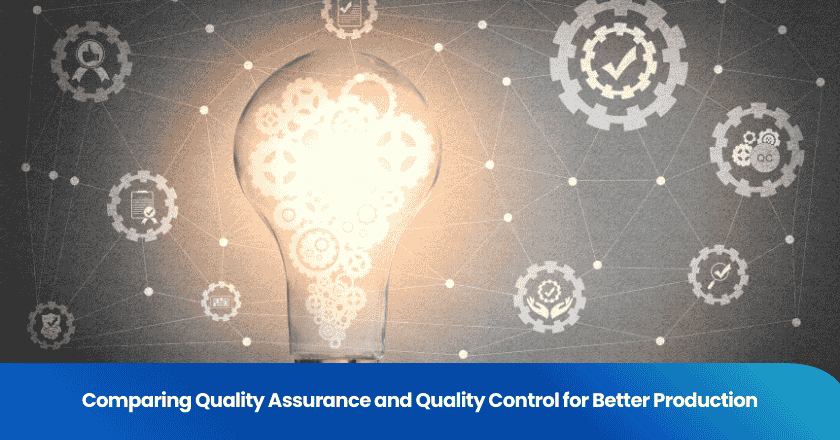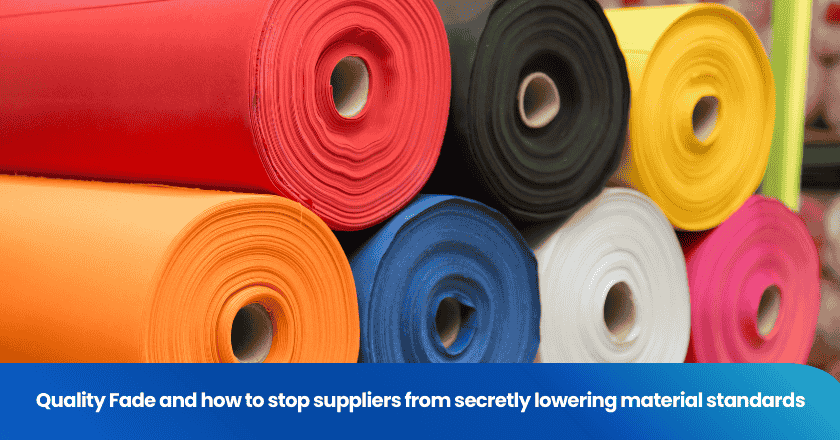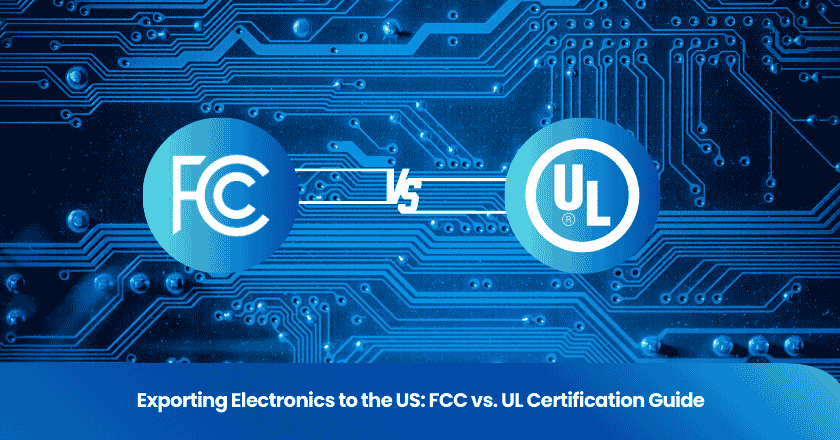
You need to understand the difference between quality assurance and quality control to achieve quality production. Quality assurance takes a proactive approach, helping you prevent defects by designing effective processes. Quality control reacts to issues, inspecting products after production and often increasing costs due to rework. When you focus on quality assurance, you use resources more efficiently and maintain high standards, leading to satisfied customers. Quality control may result in delays and a reactive stance on problems.
- Quality assurance improves resource utilization and cost efficiency.
- Quality control can cause waste and higher expenses from fixing defects.
Key Takeaways
- Quality assurance focuses on preventing defects by improving processes, leading to cost savings and higher customer satisfaction.
- Quality control inspects finished products to identify defects, which can increase costs and cause delays if not managed properly.
- Integrating both quality assurance and quality control creates a robust system that enhances product reliability and customer trust.
- Continuous improvement is essential in both QA and QC, helping organizations adapt to changes and maintain high standards.
- Utilizing the right tools for QA and QC can streamline processes, improve efficiency, and ensure compliance with industry standards.
Quality Assurance and Quality Control Defined
What Is Quality Assurance?
You encounter quality assurance as a systematic process that ensures products or services meet specific requirements. International standards organizations, such as ISO, define quality assurance as a proactive approach that focuses on process improvement and customer satisfaction. You use quality assurance to design, monitor, and refine your production methods before issues arise. This approach helps you prevent defects and maintain consistency.
Quality assurance emphasizes planning, documentation, and regular reviews. You rely on structured frameworks like ISO 9001:2015, which guides you to improve processes and increase customer satisfaction. You also benefit from industry best practices that include Total Quality Management (TQM), Failure Testing, and Capability Maturity Model Integration (CMMI). These components help you evaluate both your processes and final products against established standards.
| Definition | Description |
|---|---|
| Quality Assurance (QA) | A systematic process of determining whether a product or service meets specified requirements. |
| ISO 9001:2015 | The latest standard in the ISO 9000 series, focusing on customer satisfaction and management practices. |
| Purpose of ISO 9001 | Helps organizations improve processes and increase customer satisfaction through regular reviews of QA processes. |
| Component/Process | Description |
|---|---|
| Total Quality Management (TQM) | A company-wide approach focusing on continuous improvement and customer satisfaction. |
| Failure Testing | Identifies weaknesses by pushing products to their limits through various testing methods. |
| Process and Product Quality Assurance (PPQA) | Evaluates manufacturing processes and final products against established standards. |
| Capability Maturity Model Integration (CMMI) | Provides a framework for process improvement across five maturity levels. |
| Statistical Process Control (SPC) | Uses statistical methods to monitor and control processes, identifying variations affecting quality. |
| Quality Management System (QMS) | A structured approach to managing quality through documented policies and procedures. |
| Best Practices for Quality Assurance | Focuses on documentation, training, reviews, feedback, and data to enhance quality efforts. |
What Is Quality Control?
You apply quality control to inspect and verify the final product after production. This approach allows you to detect defects and ensure products meet established standards before reaching customers. International standards, such as ISO, recognize quality control as a critical benchmark for quality, safety, and efficiency. You follow policies and processes that support continuous improvement and compliance.
You use several activities and techniques to implement quality control:
- Inspection of materials and products for defects
- Statistical Process Control (SPC) to monitor production
- Sampling to test random products
- Automated testing for consistency
- Employee training on quality standards
- Root Cause Analysis (RCA) to identify defect sources
- Preventive maintenance for equipment
- Six Sigma to reduce defects
- Quality audits for compliance
- Feedback loops from customers
- Taguchi Method to minimize variation
You see that quality assurance vs quality control represents two distinct approaches. Quality assurance focuses on preventing problems through process management, while quality control detects and corrects issues in finished products. You need both strategies to achieve reliable production and customer satisfaction.
Major Differences Between Quality Assurance and Quality Control
Process vs. Product
You need to understand the core distinction between process and product when comparing quality assurance vs quality control differences. Quality assurance focuses on the processes that guide production, while quality control centers on the final product. You use quality assurance to design, monitor, and improve workflows, ensuring every step meets established standards. Quality control, on the other hand, inspects finished goods to verify they conform to requirements.
You can see the major differences between quality assurance and quality control in the following table:
| Aspect | Quality Assurance (QA) | Quality Control (QC) |
|---|---|---|
| Approach | Proactive | Reactive |
| Focus | Process-oriented | Product-oriented |
| Responsibility | Entire team | Dedicated personnel |
| Objective | Prevent defects through process improvement | Identify defects in finished products |
| Standards | Defined by ISO and regulatory requirements | Measured against QA-defined requirements |
Quality assurance aims to prevent problems before they occur by optimizing processes. Quality control identifies and corrects defects after production. You rely on both approaches to maintain high standards and deliver reliable products.
Prevention vs. Detection
You encounter two distinct strategies in quality management: prevention and detection. Quality assurance uses preventive measures, such as risk assessments and audits, to stop issues before they arise. This approach reduces defects and minimizes rework, saving you time and resources. Quality control relies on detection, inspecting products to find and fix errors after production.
- Quality assurance involves risk assessments and regular audits.
- You benefit from fewer defects and improved efficiency when you focus on prevention.
- Quality control detects and corrects issues in finished products.
The impact on production costs and timelines is significant. Prevention through quality assurance leads to lower total quality costs and more efficient production schedules. Detection through quality control may result in higher costs and delays due to increased appraisal activities.
| Strategy Type | Impact on Costs | Impact on Timelines |
|---|---|---|
| Prevention | Significant reduction in total quality costs and improved quality conformance | More efficient production timelines due to fewer failures |
| Detection | Diminishing returns on cost reduction; total quality costs do not consistently decrease | May lead to delays due to increased appraisal activities |
You achieve better results when you prioritize prevention, but detection remains essential for final product verification.
Team Roles
You play a vital role in quality management, whether you focus on quality assurance or quality control. In quality assurance, the entire team works together to optimize processes and prevent issues. You participate in audits, reviews, and training sessions to ensure compliance with standards. In quality control, dedicated personnel inspect products, conduct tests, and analyze data to identify defects.
| Role/Responsibility | Quality Assurance (QA) | Quality Control (QC) |
|---|---|---|
| Focus | Process optimization and prevention of issues | Detection and correction of defects |
| Key Activities | Audits, reviews, inspections | Inspections, tests, data analysis |
| Objective | Ensure compliance with quality standards | Ensure final product meets quality standards |
| Training and Development | Train staff on quality standards | Work with production teams for corrective measures |
| Continuous Improvement | Support initiatives for process enhancements | Document defects and deviations |
You see that team structure influences effectiveness. Senior developers, mid-level developers, and junior developers each contribute to quality assurance and quality control in large-scale production environments.
- Quality Assurance Specialist: Oversees process improvement and collaborates with the quality manager.
- Quality Manager: Ensures alignment with strategic goals and supports all areas of the quality management system.
You strengthen your production outcomes by understanding the major differences between quality assurance and quality control and assigning clear roles within your team.
Similarities and Shared Goals
Quality Standards
You will find that both quality assurance and quality control rely on established quality standards to guide your production efforts. These standards set clear expectations for processes and products. ISO 9001 stands out as a leading example. This standard brings together requirements for both quality assurance and quality control. Chapter 8 of ISO 9001 focuses on operational activities. You plan, implement, and control processes to meet product and service requirements. This chapter highlights the importance of monitoring and controlling processes, which is central to quality control. Chapter 9 shifts your attention to performance evaluation. You conduct internal audits and management reviews, which are essential for quality assurance. Chapter 10 emphasizes continuous improvement. You address non-compliance and take corrective actions, reinforcing the principles of both quality assurance and quality control.
Adhering to recognized standards like ISO 9001 helps you maintain consistency, meet regulatory requirements, and build trust with your customers.
| Quality Standard | QA Focus | QC Focus | Shared Benefit |
|---|---|---|---|
| ISO 9001 | Process planning, audits, reviews | Process monitoring, product inspection | Consistent quality and compliance |
Continuous Improvement
You play an active role in driving continuous improvement within your organization. Both quality assurance and quality control frameworks depend on your commitment to ongoing enhancement. Quality improvement involves process analysis, problem-solving, and corrective actions. These activities help you boost efficiency and effectiveness, leading to better product quality and higher customer satisfaction.
- Continuous improvement keeps your quality systems agile. You adapt to market changes and strengthen your competitive position.
- An effective QA and QC program evolves over time. You use the PDCA (Plan-Do-Check-Act) cycle to refine your quality practices.
You should view continuous improvement as a shared goal. When you focus on learning from mistakes and making incremental changes, you create a culture of excellence. This approach ensures your production remains competitive and responsive to new challenges.
Benefits for Quality Production
Impact of Quality Assurance
You drive quality production by implementing quality assurance throughout your organization. When you focus on quality assurance, you address potential issues before they affect your products. This proactive approach leads to measurable benefits. You see cost savings because you fix errors early in the process. Streamlined workflows improve efficiency and reduce wasted time. Your customers notice the difference, reporting fewer complaints and showing higher loyalty. Organizations often experience a 40% drop in customer complaints and a 25% increase in retention rates after adopting quality assurance programs.
| Benefit | Description |
|---|---|
| Cost Savings | You reduce expenses by catching errors before production. |
| Improved Efficiency | You optimize workflows, boosting productivity. |
| Enhanced Customer Satisfaction | You deliver consistent quality, earning trust and repeat business. |
| Compliance and Legal Cost Reduction | You avoid fines by meeting regulatory standards. |
| Optimized Resource Utilization | You minimize waste and use resources more effectively. |
Quality assurance ensures your products meet established standards, which increases customer satisfaction and reduces product recalls. You build customer confidence by delivering reliable products. Consistency in quality production strengthens your reputation and helps you maintain compliance with industry regulations.
Impact of Quality Control
You reinforce quality production by applying quality control at every stage of manufacturing. Quality control allows you to identify defects and correct them before products reach your customers. This process leads to lower defect rates and improved product reliability. You avoid costly recalls and warranty claims, which protects your bottom line. Customers trust your products when you maintain high standards through quality control.
| Aspect | Impact |
|---|---|
| Identification of Defects | You lower defect rates and boost reliability. |
| Cost Reduction | You prevent expenses from recalls and warranty claims. |
| Customer Satisfaction | You build loyalty and trust with consistent quality. |
- High-quality products result from effective quality control. You detect issues early, reducing costs and production delays. You also ensure compliance with regulatory standards, which is critical in high-risk industries. Quality control integrates risk management practices, helping you meet international standards and simplify market access.
By balancing quality assurance and quality control, you create a robust system for quality production. You protect your customers, improve safety, and deliver products that meet or exceed expectations.
Essential Tools
QA Tools
You rely on a range of digital tools to strengthen your quality assurance processes. These tools help you plan, monitor, and document every step, making your workflow more efficient and accurate. Automated QA testing tools, such as those for web, mobile, and API testing, allow you to catch issues early in the development cycle. Test management platforms help you organize test cases, track progress, and ensure nothing gets overlooked. Performance and security testing tools give you confidence that your systems can handle real-world demands and remain secure.
- Automated QA testing tools
- Test management platforms
- Performance and load testing tools
- API and cross-browser testing tools
- Mobile and security testing tools
- Unit and exploratory testing tools
- Code quality and review tools
Digital solutions improve efficiency by reducing manual data entry and saving administrative time. You gain real-time insights through dashboards and automated analysis, which helps you make quick decisions and take corrective action. These tools also standardize your processes, promote collaboration, and ensure traceability for compliance. When you use quality assurance tools, you maintain consistent standards and drive continuous improvement across your organization.
QC Tools
You use quality control tools to detect defects and verify product conformity before items reach your customers. Classic tools like quality control charts, Pareto analysis, and check sheets help you visualize trends and identify problem areas. Visual inspection and automated optical inspection (AOI) allow you to spot surface, dimensional, and assembly defects quickly. Non-destructive testing methods, such as laser scanning and electron beam inspection, let you assess product quality without causing damage.
- Quality control charts
- Pareto analysis
- Check sheets
- Visual and automated optical inspection
- Non-destructive testing
- Data-driven approaches
Advancements in technology have made these tools more powerful. Automation and data analytics improve efficiency and accuracy, helping you identify subtle defects that might escape human eyes. Real-time monitoring supports predictive maintenance, reducing downtime and waste. Systematic documentation, including defect IDs and root cause analysis, ensures you track issues and prevent them from recurring. By leveraging these tools, you enhance your quality control process and deliver reliable products.
Risks of Neglecting QA or QC
Production Issues
When you overlook quality assurance or quality control, you expose your production process to serious risks. You may notice a rise in defects, rework, and project delays. These problems can disrupt your workflow and reduce your operational efficiency. You might see production issues such as:
- Inadequate communication between team members
- Insufficient documentation of processes and standards
- Absence of clearly defined quality benchmarks
- Underinvestment in staff training
Neglecting these areas often leads to a breakdown in coordination. You may struggle to maintain consistency, which results in products that fail to meet expectations. When you do not set clear standards or provide proper training, your team cannot deliver reliable results. You may also face increased costs from rework and wasted materials.
You can break down the most common causes of production issues as follows:
1. Lack of proper communication
2. Failure to adhere to defined standards
3. Inadequate training for staff
You need to address these gaps to maintain smooth operations and protect your product integrity.
Customer Impact
Ignoring quality assurance or quality control does not only affect your internal processes. You also risk damaging your relationship with customers. High-quality products build trust and foster loyalty. When you deliver inconsistent quality, you threaten your brand reputation and customer satisfaction.
- Customers expect reliable products every time.
- Lapses in quality can result in regulatory fines, product recalls, or even loss of market share.
- A single quality failure can quickly escalate into a viral crisis.
Over 90% of consumers say that brand reputation directly influences their purchasing decisions. If you allow quality issues to reach your customers, you risk losing their trust and loyalty. You may also face negative reviews and a decline in repeat business.
You protect your reputation and customer base by prioritizing both quality assurance and quality control. Consistent quality keeps your customers satisfied and your business competitive.
Balancing QA and QC
Integration Steps
You achieve a unified quality management system by integrating quality assurance and quality control through structured steps. Start by developing standard operating procedures (SOPs) that match your company’s standards and regulatory requirements. These SOPs guide every stage, from raw material intake to final product delivery. Identify critical control points in your workflow and set up monitoring checkpoints. This approach helps you catch issues early and maintain consistency.
Document the tools, techniques, and parameters you use. Refine your SOPs based on performance data and audit results. Clear documentation supports transparency and continuous improvement. Define roles and responsibilities for each department. When everyone knows their tasks, you maintain accountability and streamline communication. Cover all personnel in your SOPs to ensure no stage gets overlooked.
You build a strong foundation for quality when you align procedures, monitor key points, and clarify responsibilities.
Best Practices
You balance quality assurance and quality control by following proven best practices. Implement SOPs and checklists to keep your team aligned with quality standards. Comprehensive training and skills development programs help your staff maintain high levels of quality control. Regular inspections and traceability systems allow you to monitor quality throughout production.
Calibrate your tools and equipment often to ensure accuracy and precision. This step reduces errors and supports reliable outcomes. Use traceability systems to track products and processes. When you practice regular inspections, you catch defects before they reach customers.
| Best Practice | Benefit |
|---|---|
| SOPs and Checklists | Consistent quality adherence |
| Training Programs | Skilled, knowledgeable staff |
| Regular Inspections | Early defect detection |
| Equipment Calibration | Accurate, precise results |
| Traceability Systems | Full process visibility |
You create a culture of quality by combining these practices. Your production process becomes more resilient, efficient, and customer-focused.
You see clear distinctions between quality assurance and quality control, as shown below:
| Aspect | Quality Assurance (QA) | Quality Control (QC) |
|---|---|---|
| Nature | Proactive and process-oriented | Reactive and product-oriented |
| Focus | Preventing defects through standardized procedures | Identifying defects in finished products |
| Role in Process | Comes before QC, designing quality into processes | Verifying quality in outputs |
| Importance | Essential for customer satisfaction and compliance | Essential for maintaining high-quality products |
| Technology Impact | Modern platforms enhance QA activities | Modern platforms improve QC processes |
Both approaches remain vital for delivering consistent results. To implement and balance these methods, you should:
1. Create effective quality control plans.
2. Set quality objectives and standards.
3. Identify key processes and activities.
4. Assign roles and responsibilities.
5. Establish inspection and testing procedures.
6. Develop documentation and reporting systems.
7. Plan for continuous improvement.
8. Include implementation timeline and resources.
You can further improve your strategy by evaluating your organization’s maturity, fostering a culture of improvement, and using advanced management tools. Regular assessment ensures your production stays competitive and reliable.
FAQ
What is the main difference between quality assurance and quality control?
Quality assurance focuses on improving processes to prevent defects. Quality control inspects finished products to detect and correct issues. You need both to maintain high standards in production.
Why should you integrate both QA and QC in your workflow?
You achieve better results when you combine prevention and detection. Quality assurance reduces errors early. Quality control verifies product quality before delivery. This approach protects your reputation and customer satisfaction.
Which industries benefit most from strong QA and QC practices?
Manufacturing, healthcare, software development, and food production rely heavily on quality assurance and quality control. You see fewer recalls, improved safety, and higher customer trust in these sectors.
How do you choose the right tools for QA and QC?
You select tools based on your production needs, complexity, and regulatory requirements. Automated testing, statistical analysis, and inspection systems help you monitor processes and products efficiently.
Can you improve quality without increasing costs?
You reduce costs by preventing defects early through quality assurance. Quality control helps you avoid expensive recalls and rework. Investing in training and efficient tools supports long-term savings.
Grow your business with TradeAider Service
Click the button below to directly enter the TradeAider Service System. The simple steps from booking and payment to receiving reports are easy to operate.




